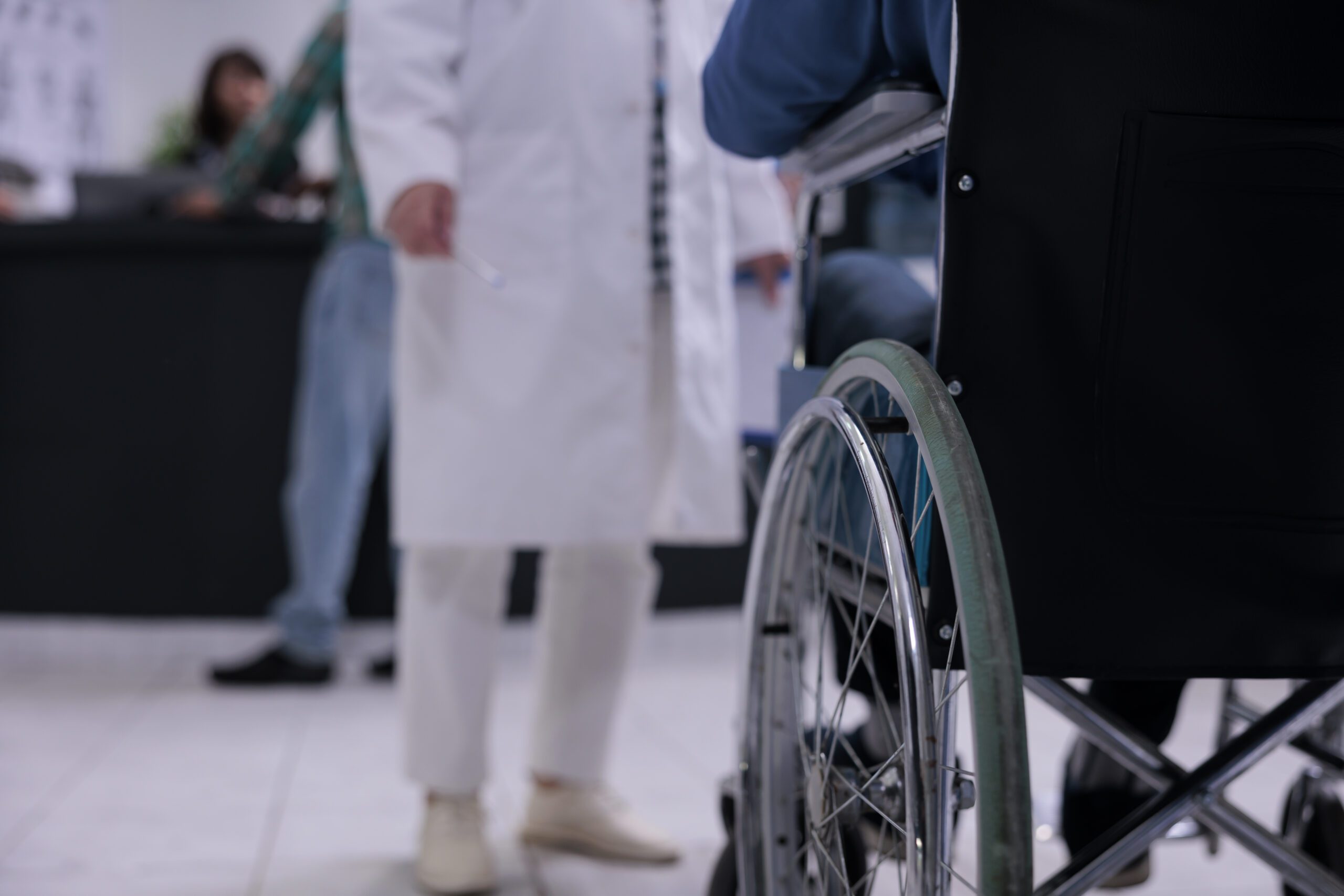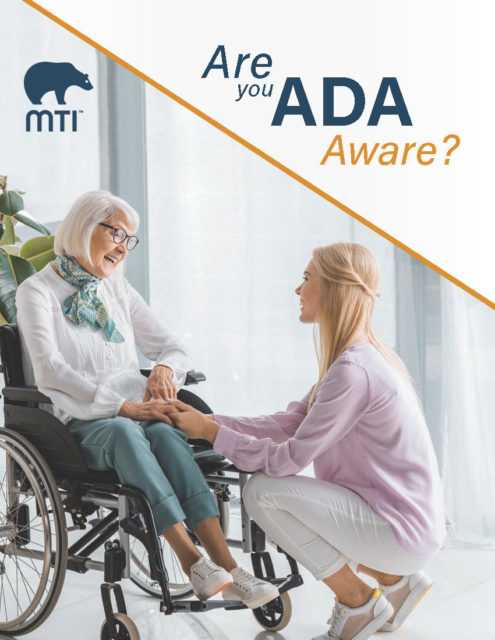
ADA compliance has consistently been a topic of discussion between our customers and sales team, known as Solutions Advisors. While most individuals recognize the necessity, prioritizing new equipment can be challenging given the many daily expenses a facility incurs. As recently as 2024, most practices remain non-compliant with ADA standards regarding examination chairs. A study conducted in March 2024 revealed that fewer than 40% of medical offices have disability-accessible examination tables or weight scales. This percentage declined between the first and second assessment of the same offices.
Fortunately, MTI serves as a resource for understanding how ADA-compliant equipment can enhance the care experience, what should be considered when selecting a product, and how to identify the best way to upgrade equipment. There are numerous reasons for a facility to invest in ADA-compliant equipment, however, some of the most common benefits of ADA-compliant equipment are highlighted below:
1. HHS and DOJ Have Adopted Enforceable ADA Standards
While accessible equipment has always been recommended, HHS and DOJ both issued final rulings in 2024 allowing for the enforcement of ADA standards on medical diagnostic equipment. Any facility receiving federal funding (including Medicare, Medicaid, and CHIP) and any government facility must comply with the scoping requirements by July and August 2026, respectively.
MTI’s involvement in helping to develop ADA compliance standards has positioned the company as a leader in ADA-compliant exam chair designs for nearly a decade, long before enforcement began, giving our team the advantage of well designed solutions to these requirements.
In fact, MTI’s founder, Jeff Baker, participated in 2012 as part of an advisory committee to the U.S. Access Board. This advisory committee brought together diverse stakeholders, including disability rights advocates, healthcare professionals, manufacturers, and technical experts, to determine specific standards for all Medical Diagnostic Equipment (MDE), including exam room chairs, to address the needs of individuals with disabilities.
2. Expanding the Patient Base by Reaching a Wider Demographic
ADA-accessible examination chairs help reduce healthcare disparities experienced by individuals with disabilities, ensuring access to essential medical examinations, diagnoses, and screenings that may otherwise be unavailable. Accessible examination chairs also benefit individuals with temporary mobility impairments, older adults, and those with obesity, expanding the potential patient base.
As healthcare becomes increasingly consolidated and competitive, practices must leverage every advantage to remain successful. Providing accessible exam chairs fosters a better care experience and broadens the range of patients a facility can serve, leading to potential growth and greater financial stability.
3. Enhancing Patient Trust and Loyalty
By demonstrating a commitment to accessibility, a practice can build trust among all patients, particularly those with disabilities, leading to increased loyalty and referrals. This can result in a higher patient influx through positive social engagement, improved public perception, and direct referrals from satisfied patients.
This shift can reduce the need to invest heavily in marketing and public relations, allowing more time and resources to be directed toward delivering the highest quality of care.
4. Improving Quality of Care and Increasing MIPS Scores
Accessible equipment enables healthcare providers to conduct more comprehensive examinations and deliver higher-quality care to all patients. This improvement in patient experience and satisfaction may lead to increased MIPS scores. Higher-quality care not only results in better patient outcomes but can also lead to greater Medicare reimbursements due to improved performance scores, directly benefiting the financial health of a facility.
ADA Section 44 Tax Credit Eligibility*
The financial burden of equipment upgrades can be mitigated through the ADA tax credit, which applies to business expenditures incurred while improving accessibility for patients with disabilities. Two tax incentives are available to businesses to help offset the cost of making accessibility improvements: a tax credit for architectural adaptations, equipment acquisitions, and other services, and a tax deduction for capital equipment investments.
The tax credit may be available to businesses with 30 or fewer full-time employees or whose total revenue was $1,000,000 or less in the previous tax year. A tax credit can cover 50% of eligible access expenditures in a year, up to $10,250 (with a maximum credit of $5,000).
ADA Section 44 Tax Credit Example:
If a physician purchases MTI ADA-compliant tables or chairs for $11,000, and the physician’s tax advisor determines that the expenditure meets the requirements of the Section 44 ADA Credit, the practice can claim a $5,000 tax credit for that tax year. Additionally, a practice may deduct $6,000 ($11,000 minus the $5,000 credit) through depreciation over the equipment’s economic life or use Section 179 Accelerated Depreciation, which allows the entire deduction in the first year.
For a physician in a 35% tax bracket, utilizing the ADA Section 44 Tax Credit and Section 179 deduction results in a net out-of-pocket cost of only $3,900 for the $11,000 examination chair.
| Cost Breakdown | Amount |
| Cost of MTI table(s)/chair(s) | $ 11,000 |
| ADA Section 44 Tax Credit | ($5,000) |
| Tax Difference from Depreciation Deduction ($6000 x 35% tax) | ($2,100) |
| Net MTI table(s)/chair(s) Cost | $3,900 |
Making ADA-Compliant Upgrades Easier
MTI is committed to ensuring that practices can implement ADA-compliant examination chairs while benefiting from technology-rich, intuitive, and user-friendly equipment designed to enhance experiences for both patients and caregivers. Better patient outcomes stem from high-quality healthcare delivery without compromising exam room equipment technology, compliance, or standards. Elevating the patient experience while reducing physical strain on staff is both achievable and necessary.
MTI’s mission to manufacture exam room equipment that delivers improved outcomes for specialty healthcare providers and their patients has only become more solidified over our 25 years of operation. The company has provided ADA-compliant exam room equipment and accessories longer than its competitors, offering patented features that meet all newly enforceable standards.
More information on up-to-date ADA regulations is available on the MTI ADA webpage.
Originally post from November 15, 2021.


